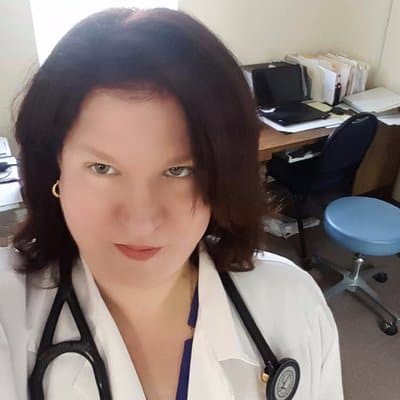Many physicians are called upon to render emergency medical care outside of a healthcare setting at some point in their careers. Emergencies on board flights are one such occurrence and happen approximately 24-130 per every 1 million passengers. What is considered an in-flight emergency varies greatly and can be something as simple as a low blood sugar that gets better with a few sips of juice to a heart attack leading to death.
As a doctor who has answered the call for medical assistance on board a flight several times, I’ve learned that most of these emergencies are relatively minor and flights rarely need to be diverted. However, I’ve also discovered that airlines have little useful tools to handle medical emergencies on board flights. There are few-to-no medications available and little in the way to monitor a person’s stability; for example, most flights don’t even carry a blood pressure cuff.
For most doctors, the desire to answer the call for help far outweighs any thought of liability. Healthcare workers are granted some freedom from certain liabilities when they answer such distress calls. And as healthcare professionals, we should do the best that we know how and defer to more skilled persons if they are available.
How to respond to in-flight emergencies?
- Introduce yourself and your credentials.
- Quickly assess the stability of the patient. The pilot has been made aware and is waiting to know if he/she needs to divert the flight.
- Get as detailed a history as possible.
- Ask what equipment/medication is available.
- If a person would benefit from a certain medication, ask the flight crew to ask other passengers if they have any available.
- Monitor the passenger until you are sure they are stable.
- Keep the flight crew well-apprised of the passenger’s condition.
Asking a doctor to help a person in need without having the necessary means of doing so is limiting and could have dire consequences. Airlines would do well to be better equipped.
What should airlines have on board flights to handle medical emergencies?
- Basic tools to measure vital signs and stability: blood pressure monitor, pulse-oximeter, etc.
- A designated space to handle medical emergencies. Currently, they are handled right where the patient is seated and, on a full flight, it might be with other passengers crammed around them. Often, a change of position and more space would help. For example, if a person is dehydrated, sitting upright might make them feel dizzy. Just being able to lie down could fix the problem as they drink more fluids.
- Epi– If a patient is having a severe allergic reaction, an epi-pen can save their life. Someone may have eaten something on board the flight that they normally don’t and not realize it contains something to which they are allergic. If an anaphylactic reaction were to occur, a person doesn’t have time to wait for an epi-pen until they reach the next port.
- Medications for myocardial infarction: sublingual nitroglycerine, aspirin, automated external defibrillators. Acute MIs are one of the most common causes of emergencies in public spaces. They need immediate treatment to limit damage to the heart.
- Medications for common conditions: It is easy to learn the most common medical emergencies that can be anticipated. If they occur in public, they will happen on airplanes. Failure to plan for these is failure to make a difference in saving lives.
- Tele-Medical consultants. It would be beneficial to have back-up healthcare professionals available in case there are none available on board a flight. Telemedicine is becoming more utilized these days and airlines would greatly benefit in implementing these tools rather than relying on the kindness of strangers.
As doctors, we are likely to be asked for help outside our usual medical setting. Not everyone responds to these calls. It is much easier to pretend to be asleep than to help without appropriate tools. However, we may be the most highly qualified person available and a person’s only hope for survival.


 PWeekly
PWeekly